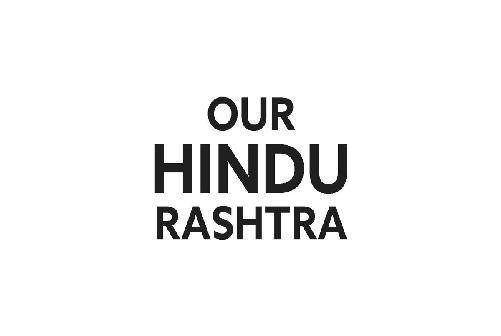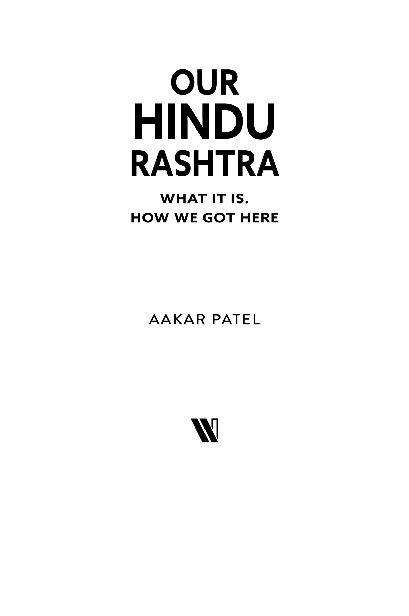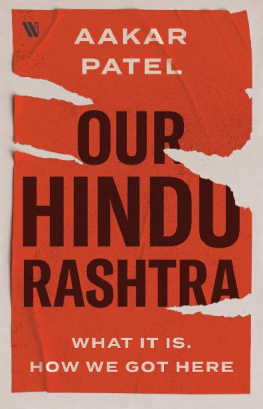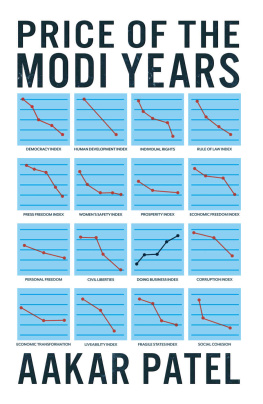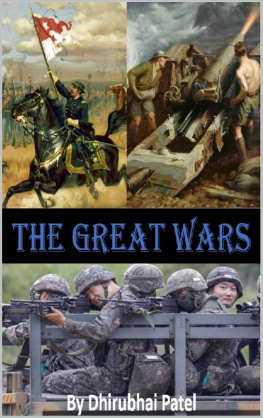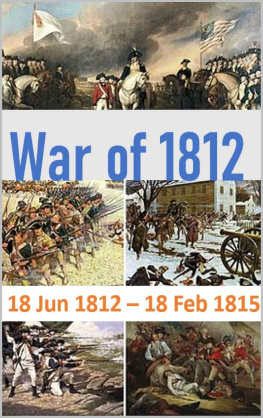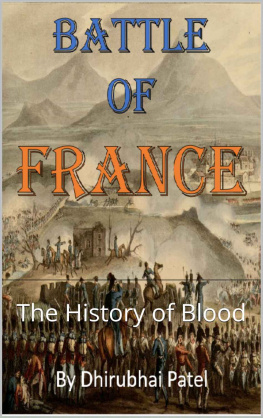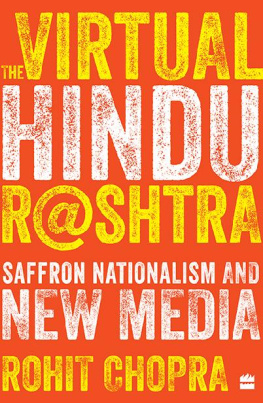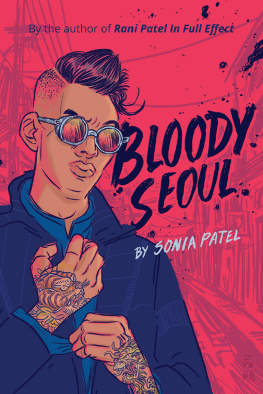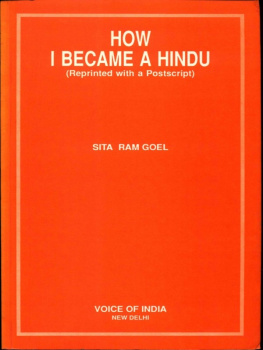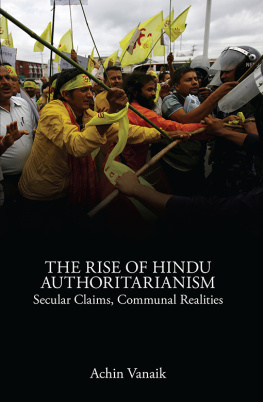First published by Westland Publications Private Limited in 2020
1st Floor, A Block, East Wing, Plot No. 40, SP Infocity, Dr MGR Salai, Perungudi, Kandanchavadi, Chennai 600096
Westland and the Westland logo are the trademarks of Westland Publications Private Limited, or its affiliates.
Copyright Aakar Patel, 2020
ISBN: 9789389648898
The views and opinions expressed in this work are the authors own and the facts are as reported by him, and the publisher is in no way liable for the same.
All rights reserved
No part of this book may be reproduced, or stored in a retrieval system, or transmitted in any form or by any means, electronic, mechanical, photocopying, recording, or otherwise, without express written permission of the publisher.
Majoritarianism is primitive and easy to do. Polarisation is democratically rewarding. Both damage the nation and its individuals but elections sanctify the savagery. When a political force chooses to pursue internal division against Indias vulnerable own, it prospers and the history of our parts proves fraternal violence is profitable. Harvesting the dividend of blood requires not genius but viciousness. In authority, it requires mere inaction: charisma will ensue. Someone can claim to possess a chest fifty-six inches around not for an achievement of personal valour or signal bravery but for failing to protect his wards from butchery. This is not questioned, much less ridiculed in our parts, but seen as heroic.
What has happened in India over the last thirty years is the telescoping of a majoritarianism already present. It was not as overtly and as aggressively pursued as it is being now, but it existed. This book attempts to understand how we have arrived here.
A reckoning of the immediate present through this same understanding will require another book and it will come soon. An urgency is being forced on us by this telescoping, and its effects on this country are now clear.
It is unclear what the idea of India is, was or if any such construct existed. We have woven myths around a Constitution few have read. The identity of India on the other hand is a more palpable and less intangible thing. Its brand is more exposed to disfigurement and mutilation. What we are doing to ourselves today comes at a price. It will be paid by us and by the generation we are bringing into this polarised and prejudiced present, before we can move on. And we will, of course, move on.
Majoritarianism is both natural and abnormal. Natural because it is an instinct of our tribal self. Abnormal because it is vestigial: we are no longer Neanderthals and tribalism is unproductive in a nation that sends rockets to Mars.
Id like to thank the following individuals. At Westland, Deepthi for commissioning this book, and my editor, Karthik. My wife Tushita and Shailesh for reading the chapters as they were being written and for making them more readable. Mahmood for his critique and for his validation.
Aakar Patel
Bangalore
31 October 2020
This book is about how India became majoritarian, privileging one community over others. It did so in a different way than its neighbours, but the result was as lethal to its society and its communities as was the majoritarianism of the nations around it.
If we look at the modern history of South Asian nations, India stands out for its constitution. Alone in South Asia, India has not dabbled with constitutional majoritarianism. It did not officially privilege the rights of one community or privilege one religion over the others. This made it unique in the region that comprises Afghanistan, Pakistan, the Maldives, Sri Lanka, Bangladesh, Bhutan, Nepal and India.
Of these nations, India is unique for wanting to be inclusive throughout its independent history. This wanting is best expressed through the Constitution, which is an aspirational document for any nation, but especially so in our part of the world, with its deprivation, poverty and history of social violence. Constitutions represent a map of a better place we can reach from our present if we follow its directions and guidance. The Indian Constitution has attempted to steer us away from the prevalent thinking around us and towards something higher, more universal.
But the Bharatiya Janata Party, and especially since 2014 under Narendra Modi, appears to be pulling India in the opposite direction, away from this constitutional goal being aspired for and towards our lived reality. The facts of existence in India bear little resemblance to the values of the Constitution. Minorities are actively and regularly persecuted, dissent is punished, the judiciary is unable to balance executive overreach, freedoms are restricted often to the point of being absent and the State is vicious. It is a reality that is also reflected, truth be told, in the everyday actions of Indians themselves as the violence and discrimination reported in our newspapers and TV channels daily testify. This pulling away has been achieved by the BJP through selectively emphasising that which is divisive and keeps frozen the present and its antagonisms. And by using the current framework to push its communalism.
This is in keeping with the manner of Indias route to majoritarianism. India did not approach the brutalisation of its minorities through constitutional change, but through existing law and policy and, above all, through the issues that parties and governments picked and stayed focused on till the majoritarian impact was achieved. It is clear, as I finish writing this towards the end of 2020, that this impact has taken root and will be with us for a long time. We then owe it to ourselves to examine it honestly and to see how we arrived here.
Let us begin with nomenclature. The Hindutva ideology and its supporters and votaries are referred to as being right and right-wing. Is this accurate and if so, what does it mean? The word right is used because of the seating arrangement in the early French Parliamentthey sat to the right of the assembly presidents chair. This group of representatives, conservatives as they were known, were trying to preserve or conserve aspects of the monarchy and the social order, and were averse to change or innovation. Their opponents, who were republicans insisting on reform rather than conservation, sat to the left of the presidents chair. And so the terms right and left mean conservative as opposed to reformist or liberal.
In American politics, the conservative seeks to preserve what she sees as Christian values and tradition, from encroachment by the State. On such issues as abortion and gay rights, the American conservative seeks a halt to reform.
This is social conservatism rather than political and such a person seeking a halt to reform could be either a Democrat or a Republican, though for the last few decades she has been mostly Republican.
British conservatism rose from its class system and the landed elite, seeking to preserve the social order by supporting the monarchy, the church and the empire. The political opposition to it is called Labour, because the working classs interests are fundamentally opposed to conservatism. They are seen as socialist because they push for greater state ownership over ownership by private interests that they feel shut out from. In time, the liberal and conservative ideologies have evolved and expanded, but retain their essential differences.
